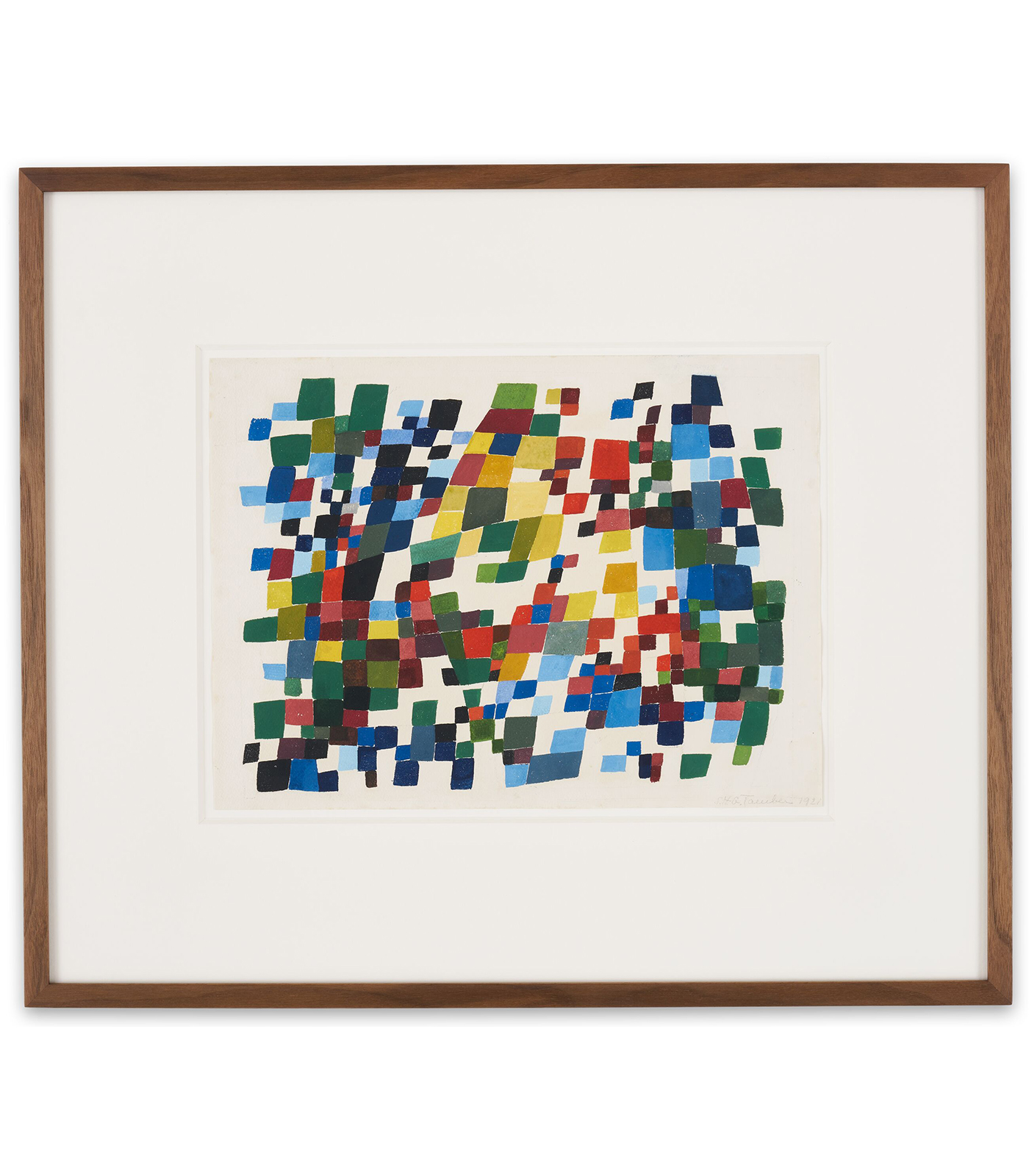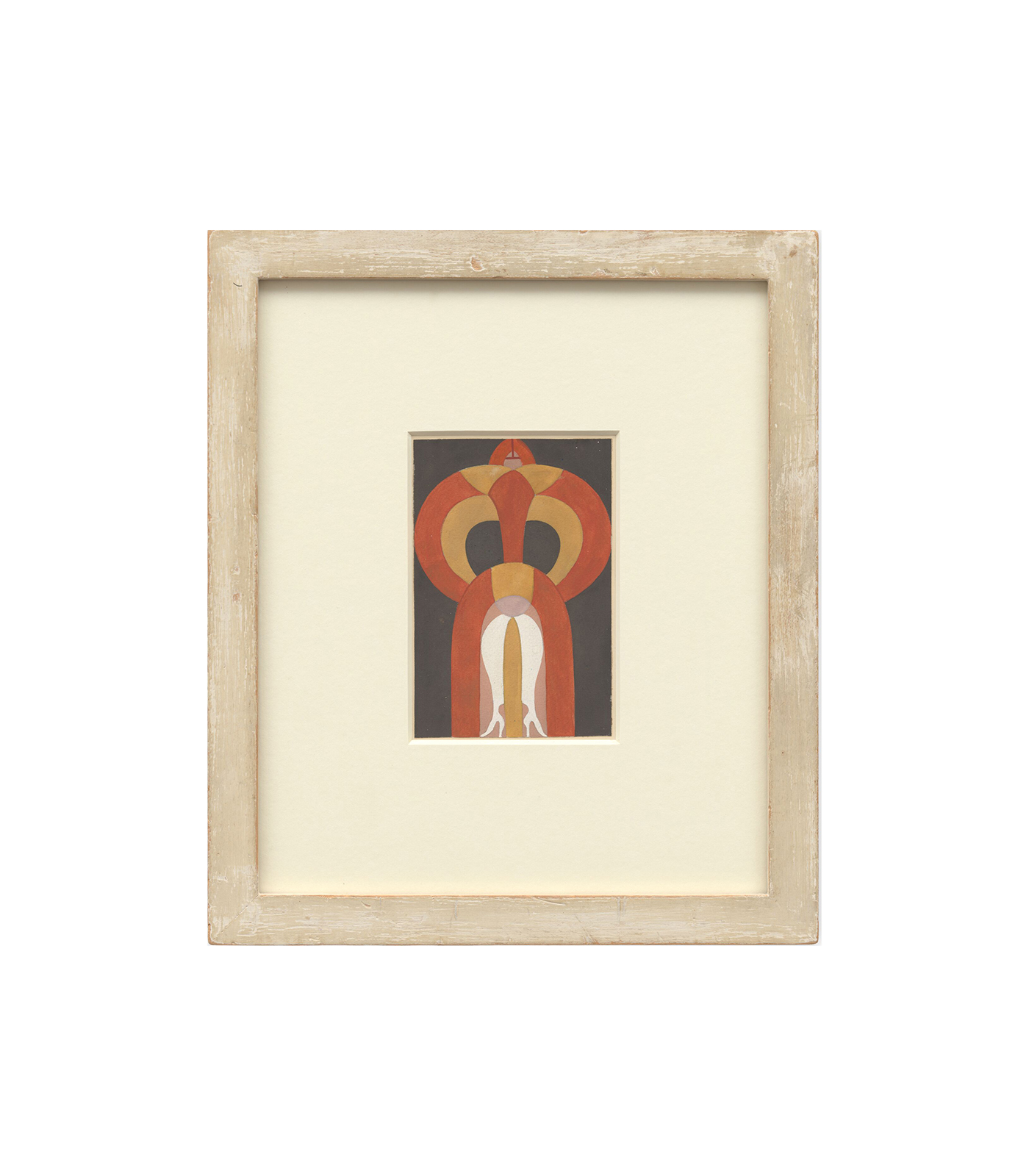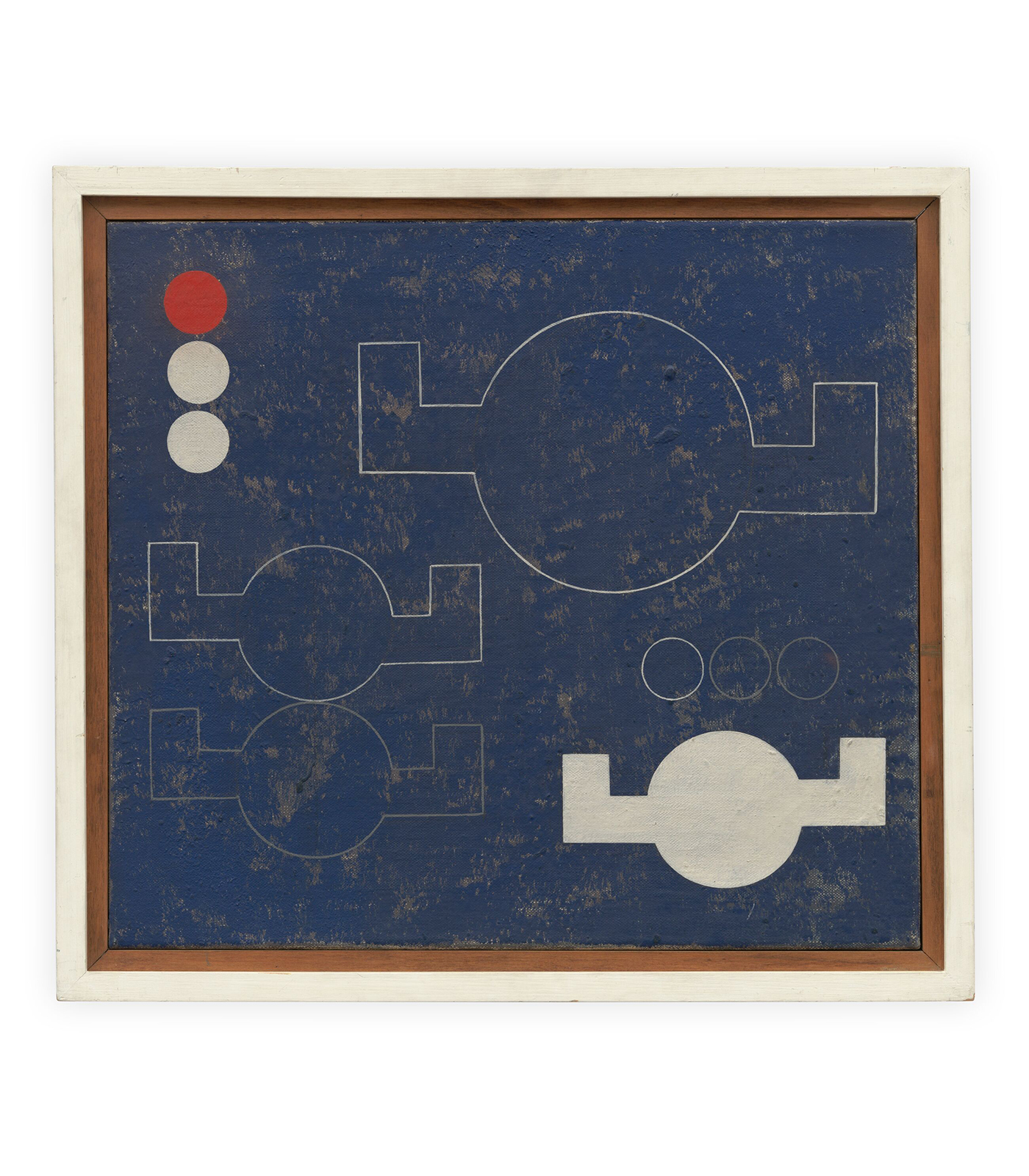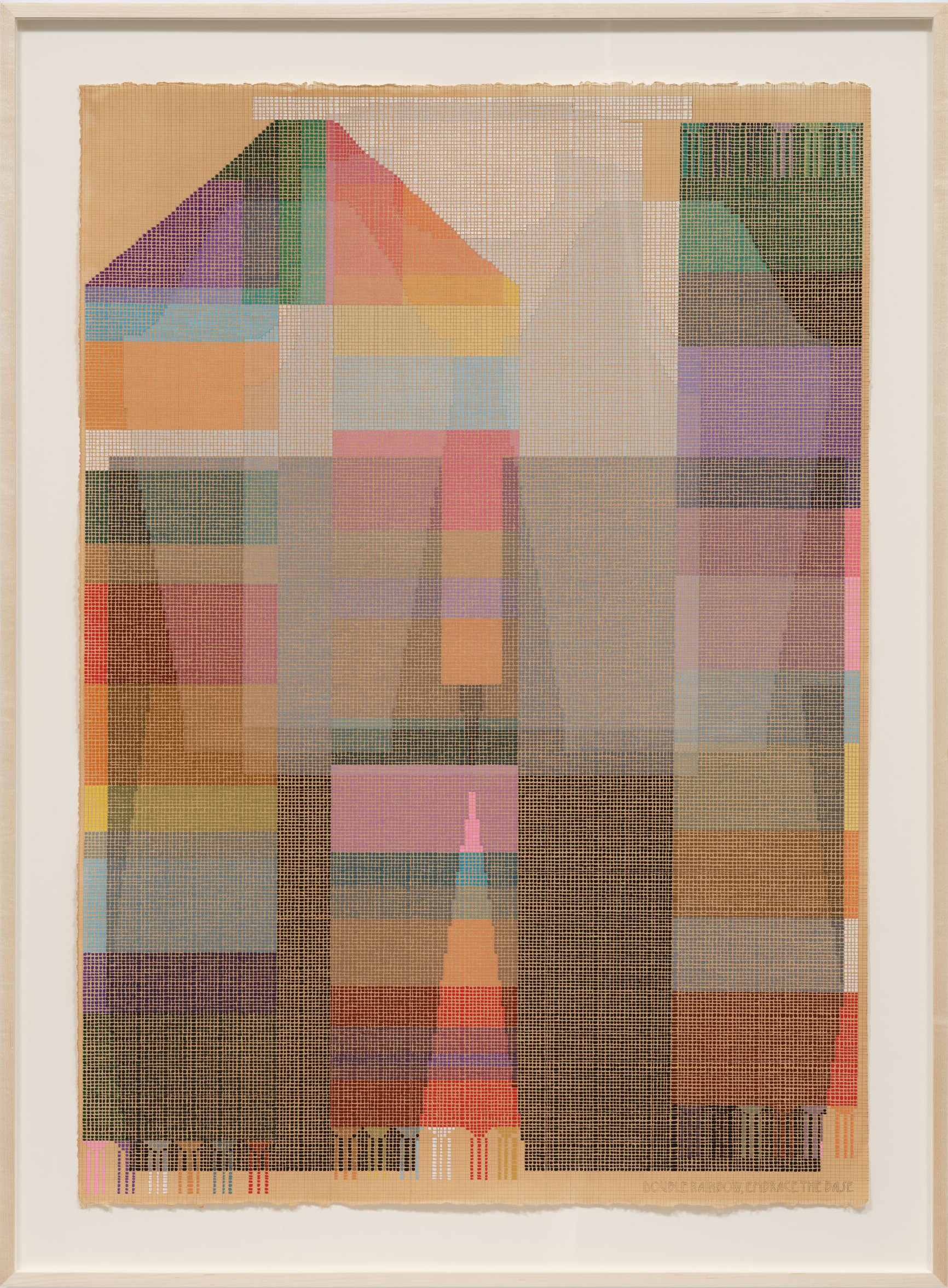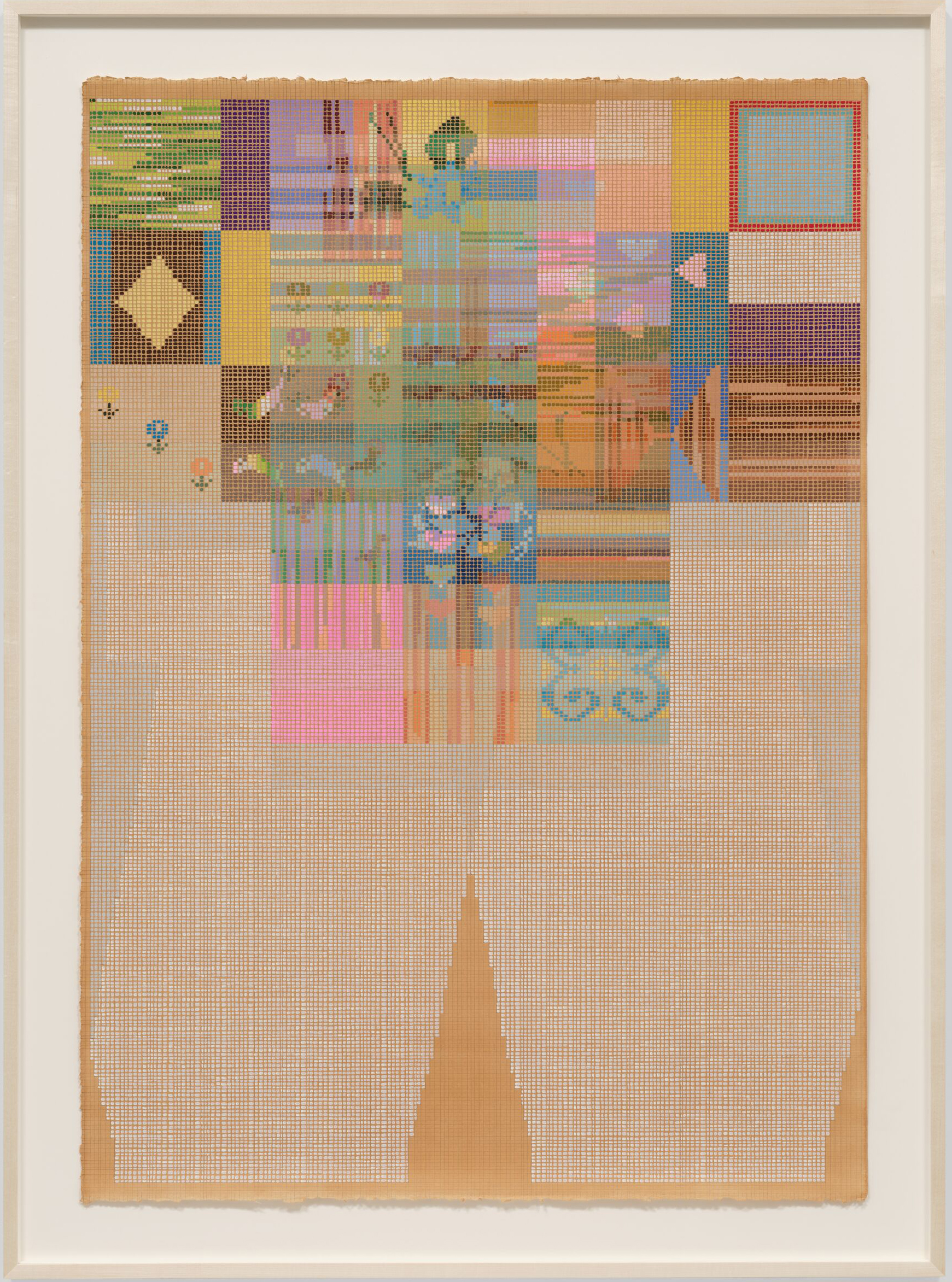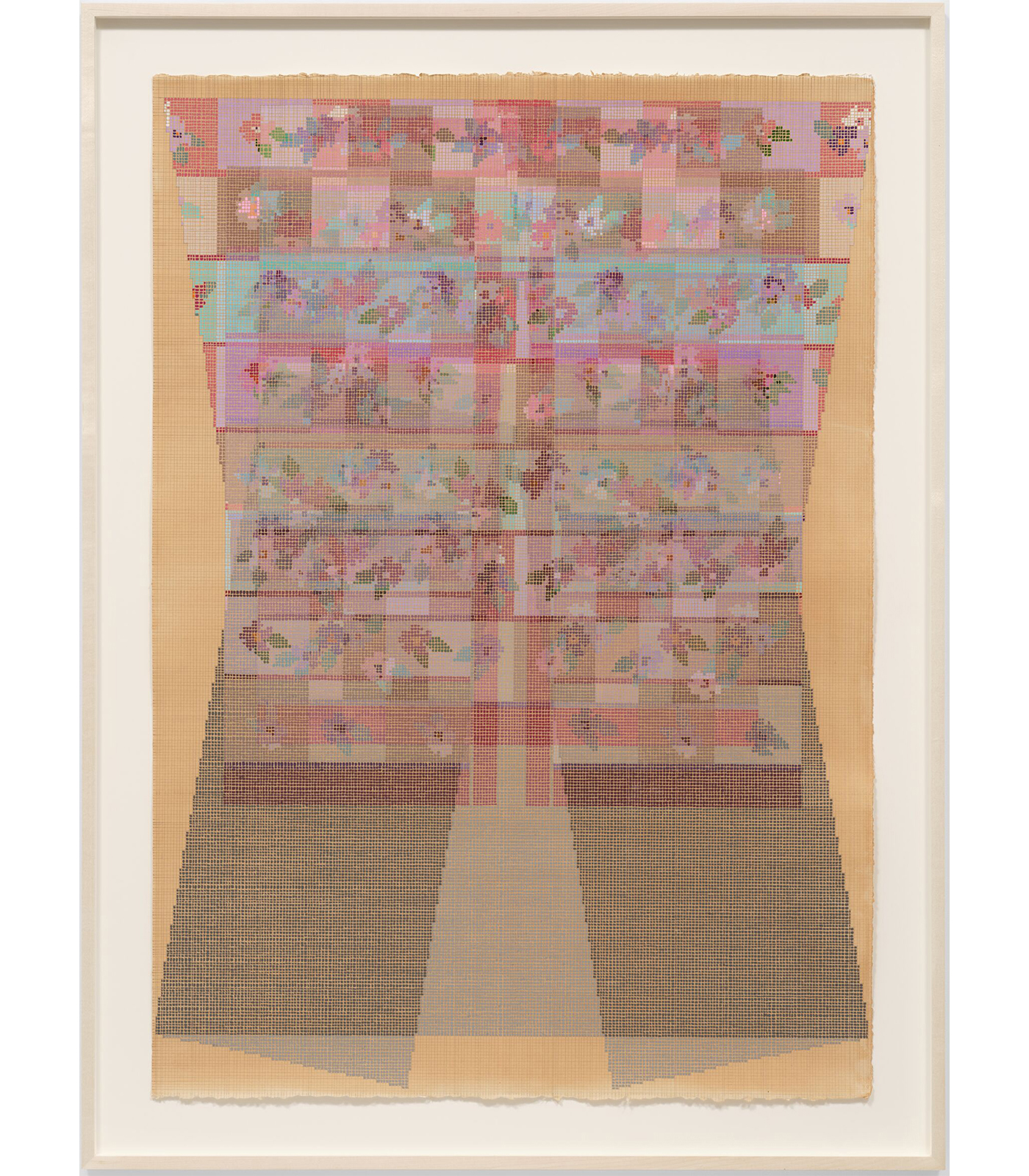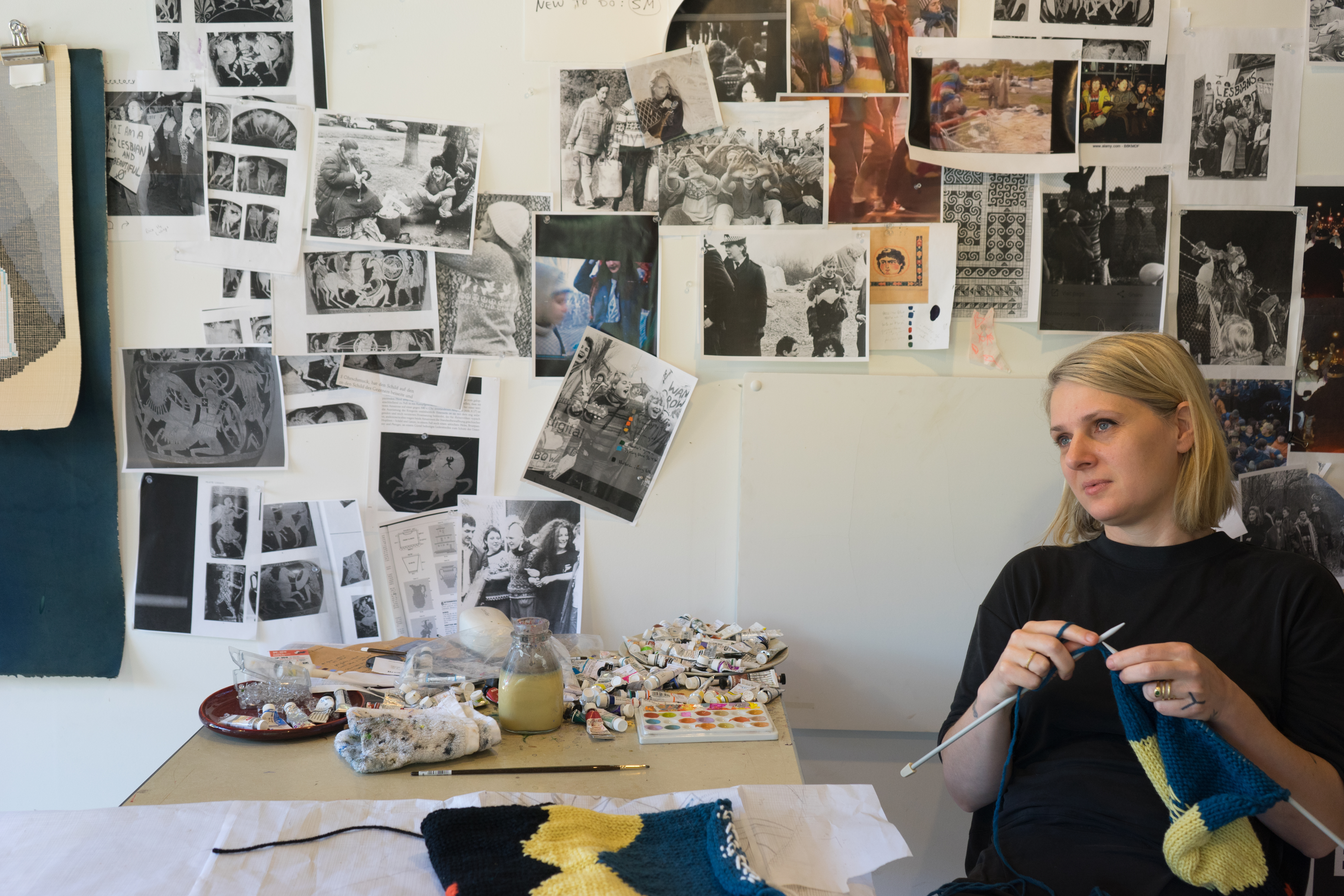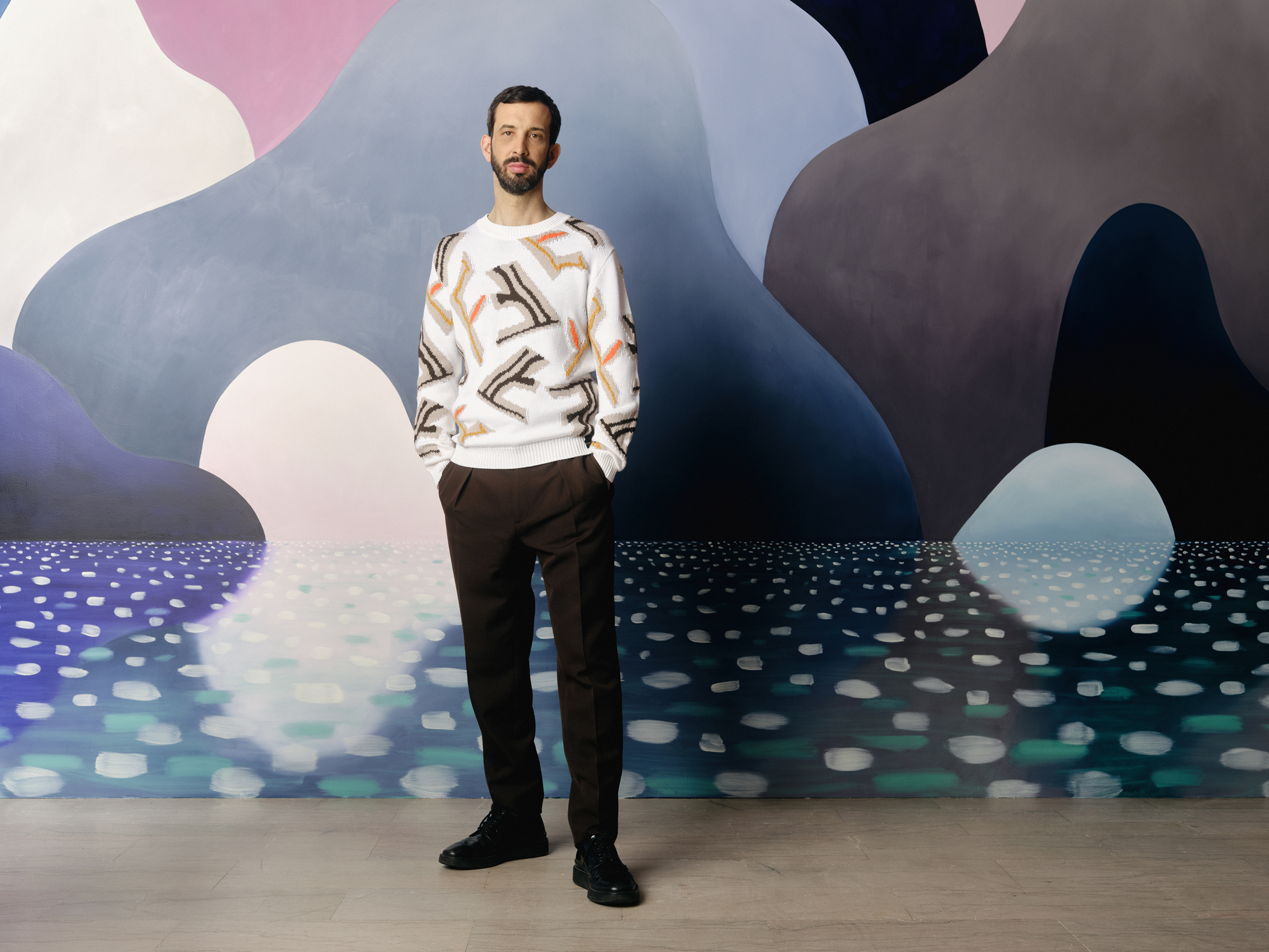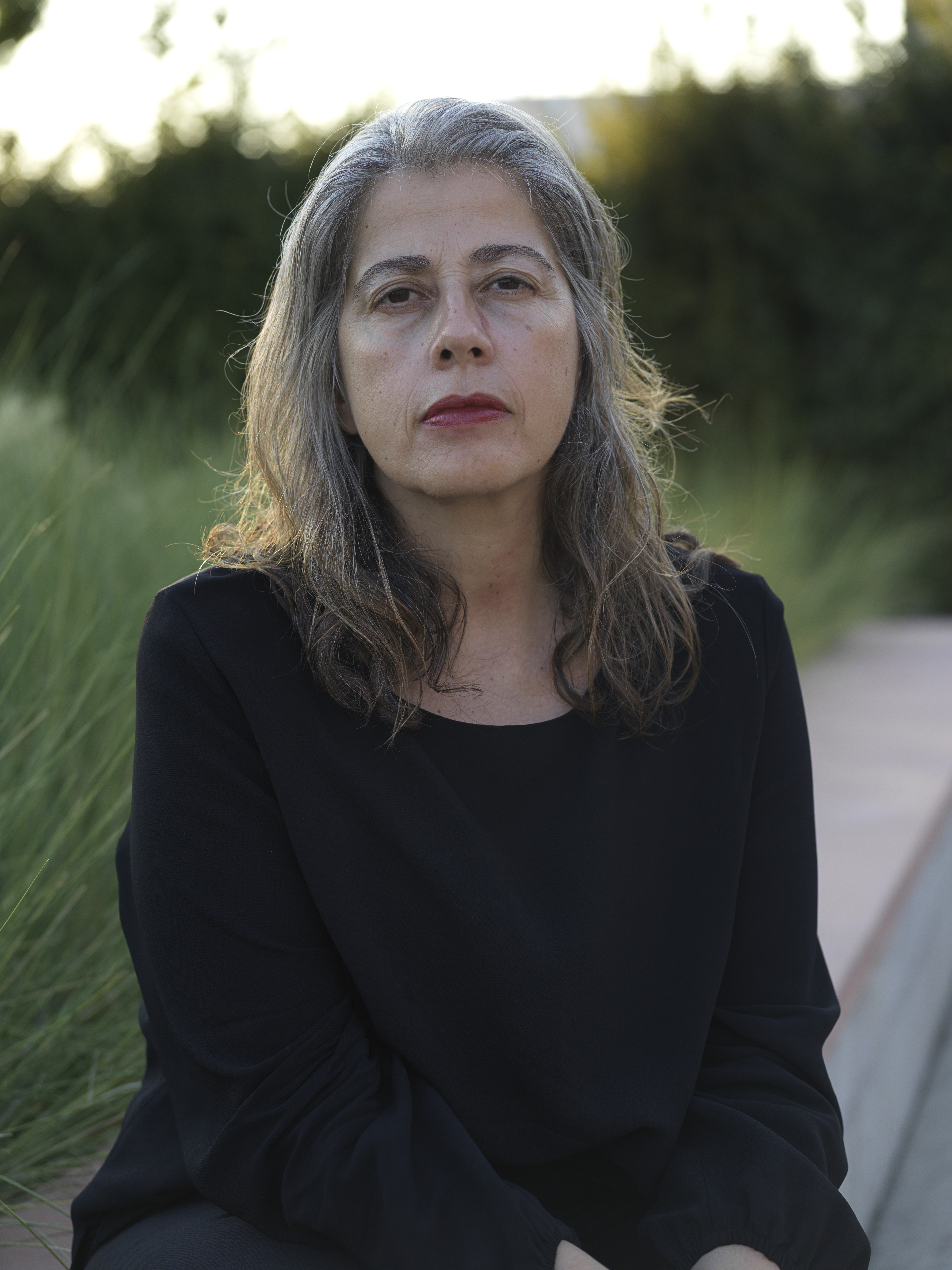SOPHIE TAEUBER-ARP WITH CONTEMPORARY ARTISTS
EXEMPLARY MODERN
6 September – 4 November 2023
New York, 69th Street
Hauser & Wirth New York presents a special exhibition juxtaposing key works by pioneering early 20th-century Swiss modernist Sophie Taeuber-Arp (1889-1943) with works by three contemporary artists—Leonor Antunes, Ellen Lesperance and Nicolas Party.
On view through 4 November, ‘Exemplary Modern. Sophie Taeuber-Arp with Contemporary Artists’ has been organized by Tanya Barson.
Explore the exhibition
‘Exemplary Modern. Sophie Taeuber- Arp with Contemporary Artists’ highlights the versatility and enduring legacy of the Swiss avant-garde master. Through the sculptures, works on paper and textile on view, the practices of Antunes, Lesperance and Party resonate with that of Taeuber-Arp, underscoring the diversity and enduring influence of her radical interdisciplinary oeuvre.
Sophie Taeuber-Arp
The exhibition at Hauser & Wirth features examples by Taeuber-Arp that foreground her varied interests and inventive use of materials. Different series of compositions on paper typify her meticulous attention to the interplay of geometry and color, a formal concern that informed much of her practice. Sketches of scenographies showcase the artist’s mastery in designing theatrical space, while a beadwork purse on view encapsulates her brilliance in dissolving the line between applied and fine art.
In this short film from Ursula magazine, Leonor Antunes, Ellen Lesperance and Nicolas Party speak about the ways in which Taeuber-Arp’s exuberant multidisciplinary experimentation has influenced their own work.
Nicolas Party
By situating such objects in conversation with new and recent works by Antunes, Lesperance and Party, the exhibition reveals ways in which Taeuber-Arp’s multifaceted career and exceptional versatility continue to generate ripples across art today.
Leonor Antunes
Antunes works in a way that is complementary to Taeuber-Arp by drawing on a wide range of disciplines and sometimes unconventional materials. That Antunes’s sensitivity and intelligence in her use of materials deliberately sets aside the traditional hierarchies placed upon media or disciplines, and consciously embraces techniques associated with craft, brings her work into vivid alignment with that of Taeuber-Arp.
Ellen Lesperance
Lesperance’s sense of pattern and design also calls to mind the pattern and decoration movement (known also as the new decorativeness) of the mid-1970s to the early 1980s, to which art education was fundamental. Thus the artist’s practice aligns to that of Taeuber-Arp with its dedication to balancing figurative and abstract design, and to teaching and writing (Taeuber-Arp taught at the Applied Arts Department of Zurich’s Trade School for 13 years and in 1922 published her text, ‘Remarks on Instruction in Ornamental Design’).
About the artists
Learn more about Sophie Taeuber-Arp, Nicolas Party, Leonor Antunes and Ellen Lesperance

Tue 26 Sep 2023, 6 pm
In Conversation: Nicolas Party & The Frick Collection’s Xavier Salomon
On the occasion of the exhibition 'Exemplary Modern. Sophie Taeuber-Arp with Contemporary Artists' at Hauser & Wirth 69th Street, and in tandem with the site-specific installation ‘Nicolas Party and Rosalba Carriera’ at The Frick Collection, please join us for a conversation with artist Nicolas Party and The Frick’s Deputy Director and Chief Curator, Xavier Salomon.
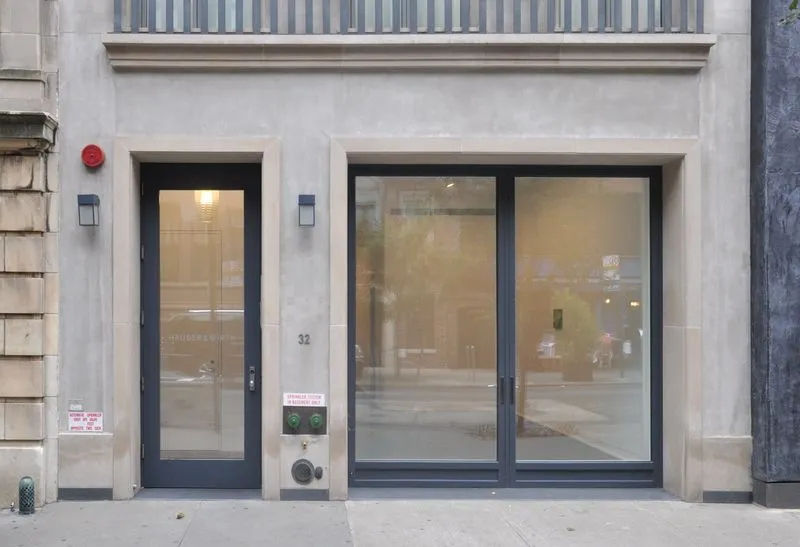
On view at New York, 69th Street
Hauser & Wirth’s first gallery in North America welcomes visitors to the historic Upper East Side neighborhood of Lenox Hill. Built in 1910, the five-story townhouse presents museum-caliber exhibitions in intimate and inviting surroundings.
About the Artist

Sophie Taeuber-Arp
Sophie Taeuber-Arp (1889 – 1943) is one of the most important artists of the twentieth-century avant-garde and is considered a pioneer of Constructivist art. Reconciling extremes with confidence—Dada and Geometric Abstraction, fine art and utilitarian objects—Taeuber-Arp’s works boldly engaged with the intellectual context of international modernism. Through her multi-faceted approach to media, she challenged traditional hierarchies between fine and applied art, and asserted art’s urgent relevance to daily life. Taeuber-Arp defied categorization during her brief career through her work as a painter, sculptor, architect, performer, choreographer, teacher, writer, and designer of textiles, stage sets and interiors.
Born in Davos, Switzerland, Sophie Taeuber-Arp began her studies at the School of Applied Arts in St. Gallen between 1906 and 1910, studying textile design and embroidery. She later moved to the experimental workshops of Hermann Obrist and Wilhelm von Debschitz in Munich, where she learned a variety of techniques in fine and applied art and architecture, before spending a year studying weaving at the School of Arts and Crafts in Hamburg. The outbreak of World War I in 1914 forced Taeuber-Arp to return to Switzerland, where in 1915 she took lessons in Ausdruckstanz (expressive dance), with the choreographer Rudolf von Laban and the revolutionary dancer Mary Wigman. The same year, during a visit to the Galerie Tanner in Zurich, she met her future husband Hans Arp, whom she married in 1922.
Between 1916 and 1919, Taeuber-Arp was a key member in the Zurich Dada movement, performing in modern expressive dances at the Cabaret Voltaire and the Galerie Dada. From 1916–1929, Taeuber-Arp taught textile design at the Zurich School of Arts and Crafts. Her teaching methods in color theory and abstraction were informed by her own practice that deliberately favored mediums and techniques that challenged accepted hierarchies—whether that was through her pioneering use of the grid, free-flowing geometric forms or abstracted figures. In these years, Taeuber-Arp produced collages, watercolors, textile works and stage sets, marionettes and tapestries, utilizing a unique interplay between color and form which would later solidify her place as an early founder of Constructivist art.
1926 was a turning point in Taeuber-Arp’s career, when she was commissioned to design the interior of the Aubette, a cultural center, in Strasbourg—a project she asked Hans Arp and Theo van Doesburg to collaborate with her on. Once completed in 1928, van Doesburg devoted an issue of his journal De Stijl to their groundbreaking design of a public environment that inextricably melded art with daily life.
The Aubette commission gave Taeuber-Arp and her husband economic freedom that allowed them to move to Meudon, near Paris, where she conceived and designed their house and studio and some of its furniture. This marked the beginning of the most productive period in Taeuber-Arp’s life. She joined various artistic collectives from Cercle et Carré to Abstraction-Création and the Swiss group Allianz alongside fellow artists such as Georges Vantongerloo, Piet Mondrian and Max Bill, and founded and edited the radical art magazine Plastique. Arp’s and Taeuber-Arp’s house in Meudon became a meeting place for artists, writers and other intellectuals. Their circle of friends included the artists Sonia and Robert Delaunay, Wassily Kandinsky, Joan Miró, and Marcel Duchamp. Between 1929 and 1943, Taeuber-Arp exhibited in 40 exhibitions across the globe.
Taeuber-Arp and her husband fled to Southern France when the Nazis invaded Paris, before crossing over to Zurich in late 1942. The following year she died tragically and prematurely from accidental carbon monoxide poisoning.
Current Exhibitions
1 / 12






